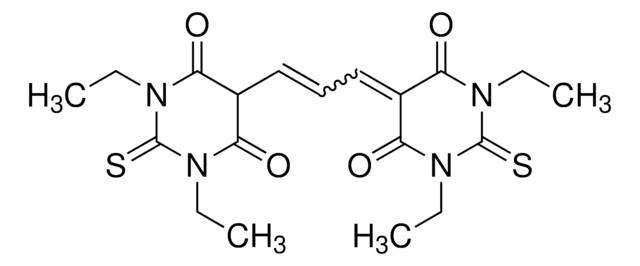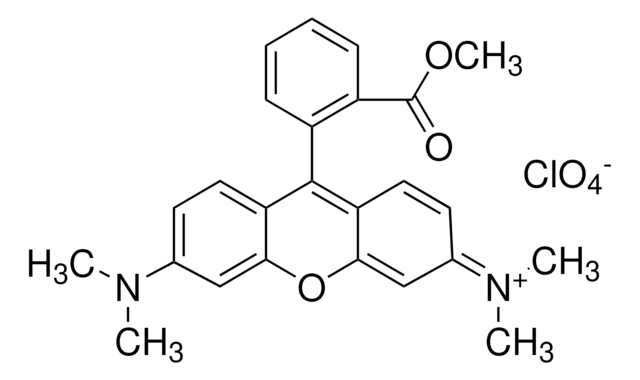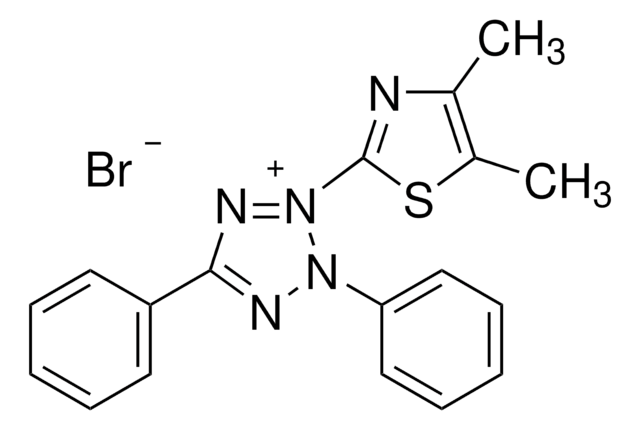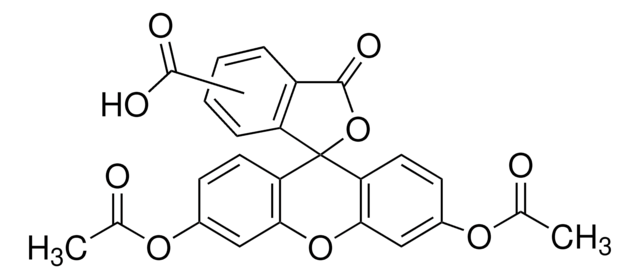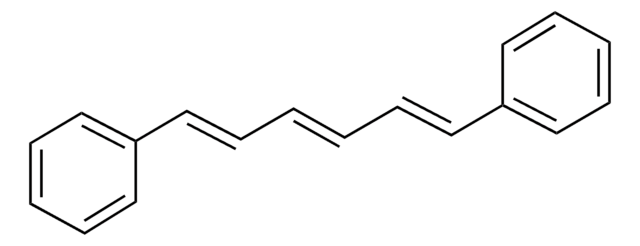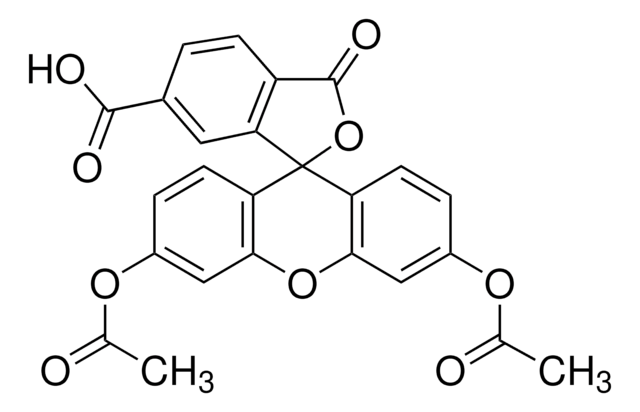D8189
Bis(1,3-dibutylbarbituric acid) trimethine oxonol
≥95% purity (HPLC), powder or solid
Synonyme(s) :
DiBAC4(3)
About This Item
Produits recommandés
product name
Bis(1,3-dibutylbarbituric acid) trimethine oxonol, ≥95% (HPLC)
Niveau de qualité
Pureté
≥95% (HPLC)
Forme
powder or solid
Technique(s)
titration: suitable
Couleur
orange to dark red
Solubilité
DMF: soluble
DMSO: soluble
ε (coefficient d'extinction)
≥90000 at 490-496 nm in methanol
Fluorescence
λex 513-519 nm
Application(s)
diagnostic assay manufacturing
hematology
histology
Température de stockage
2-8°C
Chaîne SMILES
CCCCN(C(N(CCCC)C1=O)=O)C(C1=C/C=C/C2C(N(CCCC)C(N(CCCC)C2=O)=O)=O)=O
InChI
1S/C27H40N4O6/c1-5-9-16-28-22(32)20(23(33)29(26(28)36)17-10-6-2)14-13-15-21-24(34)30(18-11-7-3)27(37)31(25(21)35)19-12-8-4/h13-15,20H,5-12,16-19H2,1-4H3/b14-13+
Clé InChI
ATJCYSYHWGQAET-BUHFOSPRSA-N
Application
Actions biochimiques/physiologiques
Code de la classe de stockage
11 - Combustible Solids
Classe de danger pour l'eau (WGK)
WGK 3
Point d'éclair (°F)
Not applicable
Point d'éclair (°C)
Not applicable
Équipement de protection individuelle
Eyeshields, Gloves, type N95 (US)
Faites votre choix parmi les versions les plus récentes :
Déjà en possession de ce produit ?
Retrouvez la documentation relative aux produits que vous avez récemment achetés dans la Bibliothèque de documents.
Les clients ont également consulté
Notre équipe de scientifiques dispose d'une expérience dans tous les secteurs de la recherche, notamment en sciences de la vie, science des matériaux, synthèse chimique, chromatographie, analyse et dans de nombreux autres domaines..
Contacter notre Service technique
